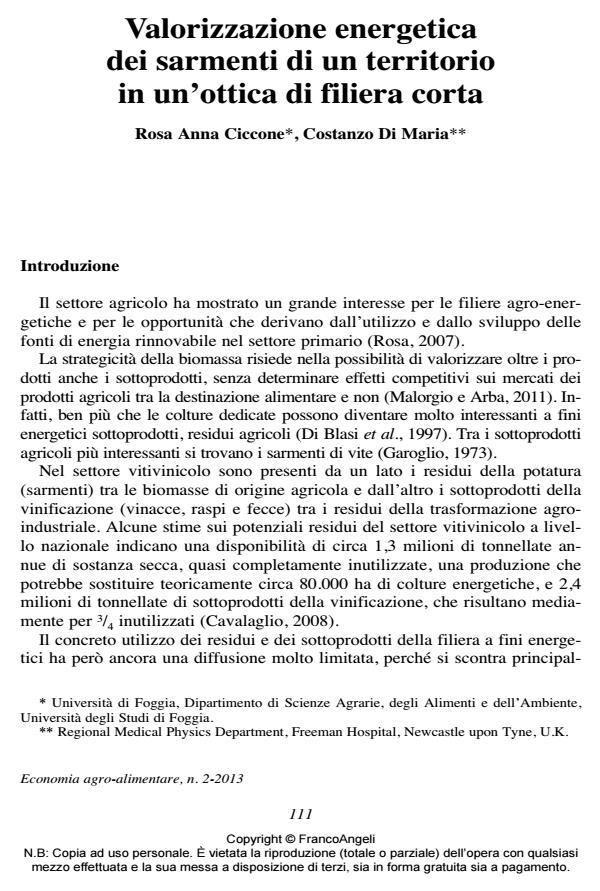Valorizzazione energetica dei sarmenti di un territorio in un’ottica di filiera corta
Titolo Rivista ECONOMIA AGRO-ALIMENTARE
Autori/Curatori Rosa Anna Ciccone, Costanzo Di Maria
Anno di pubblicazione 2013 Fascicolo 2013/2
Lingua Italiano Numero pagine 16 P. 111-126 Dimensione file 195 KB
DOI 10.3280/ECAG2013-002007
Il DOI è il codice a barre della proprietà intellettuale: per saperne di più
clicca qui
Qui sotto puoi vedere in anteprima la prima pagina di questo articolo.
Se questo articolo ti interessa, lo puoi acquistare (e scaricare in formato pdf) seguendo le facili indicazioni per acquistare il download credit. Acquista Download Credits per scaricare questo Articolo in formato PDF

FrancoAngeli è membro della Publishers International Linking Association, Inc (PILA)associazione indipendente e non profit per facilitare (attraverso i servizi tecnologici implementati da CrossRef.org) l’accesso degli studiosi ai contenuti digitali nelle pubblicazioni professionali e scientifiche
The farming sector has been showing increasing interest in the possibility to setup bio-energetic chains and the benefits that can be obtained from the valorisation ofrenewable energy sources available in the primary sector (Rosa, 2007).Vine shoots produced during the vine trimming process usually represent aproblem for the farm since it needs to deal with and pay to dispose of them; the maincosts are related to the processes of shredding and burying. Those vine shoots caninstead be exploited and provide an additional income (Cotana et al., 2008).The process for the valorisation of the waste material deriving from the trimmingconsists in treating the residual agricultural biomass (trimmed shoots) by utilising theprocesses of shredding and drying. This allows obtaining a biofuel (chips or pellet) thatcan be used in the same farm to meet its energy demands (heating, cooling, electricity).From the Foggia area, an estimated 31,755 ha of vineyards can provide in total88,121 t of biomass per year. This gives the possibility to create in this area 7biomass power plants of variable size up to a limit of 1 MW.The exploitation of biomass from agroforestry sources to produce electric energycan provide an opportunity in terms of both energy availability and technologicaldevelopment. Moreover, it can revitalise the agricultural, forestry and zootechnicalactivities which represent one of the main components of the local economy inPuglia and help with the preservation of the territory. In this study, a method hasbeen developed to estimate the energy production that can be obtained from thebiomass available in a certain territory. The planning has been optimised on the basisof the number, size, location, and the basin of interest of the plants. The valorisationof the biomass deriving from the viticulture sector can provide and distribute benefitsthroughout the chain, making profit from what currently represent only an additionalcost for the farms. This argumentation demonstrates that supporting the entrance ofthe viticulture sector into the agrinergy world is of paramount importance.
Parole chiave:Vine shoots, short supply chain
Jel codes:Q24, Q42
Rosa Anna Ciccone, Costanzo Di Maria, Valorizzazione energetica dei sarmenti di un territorio in un’ottica di filiera corta in "ECONOMIA AGRO-ALIMENTARE" 2/2013, pp 111-126, DOI: 10.3280/ECAG2013-002007